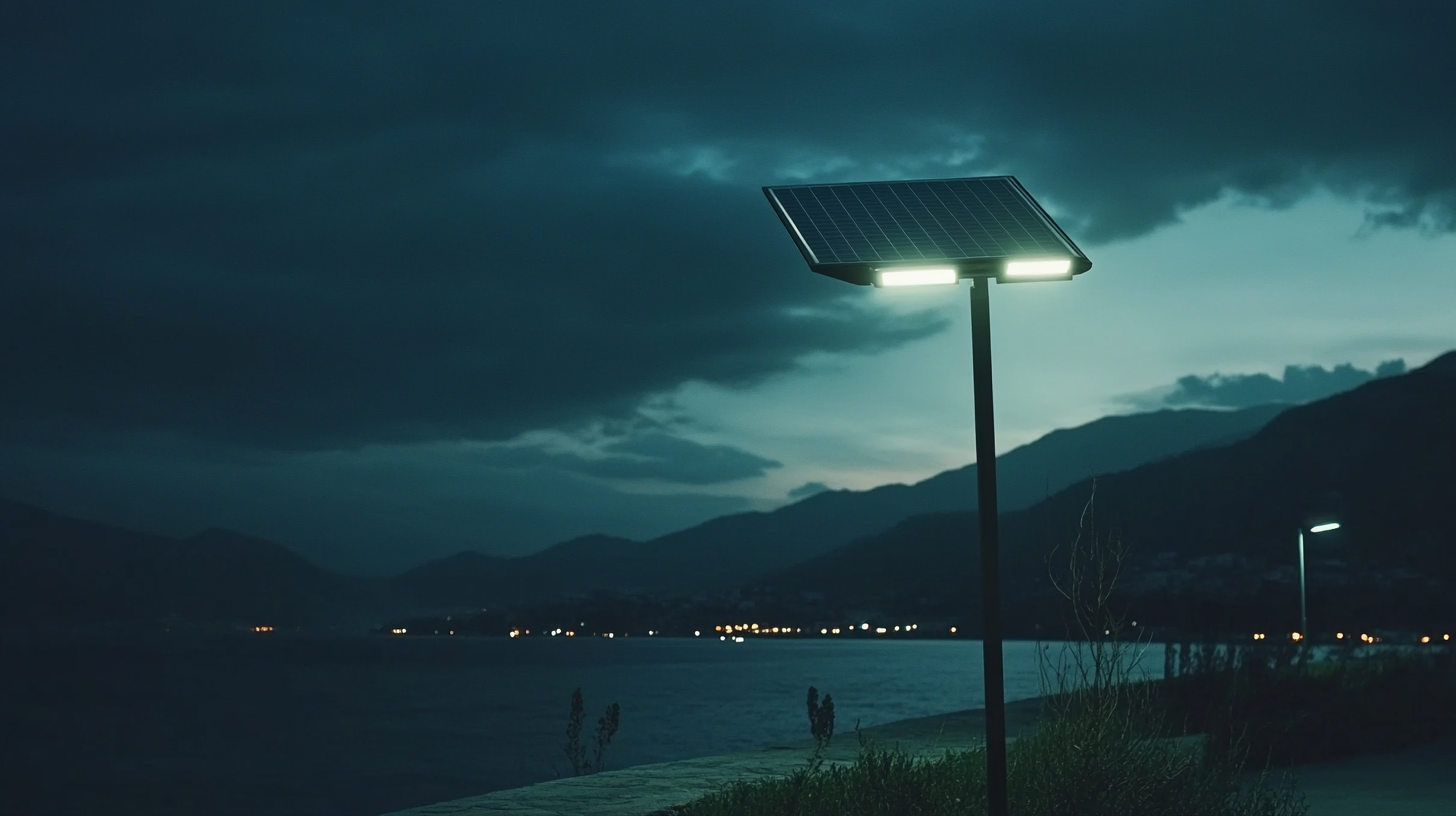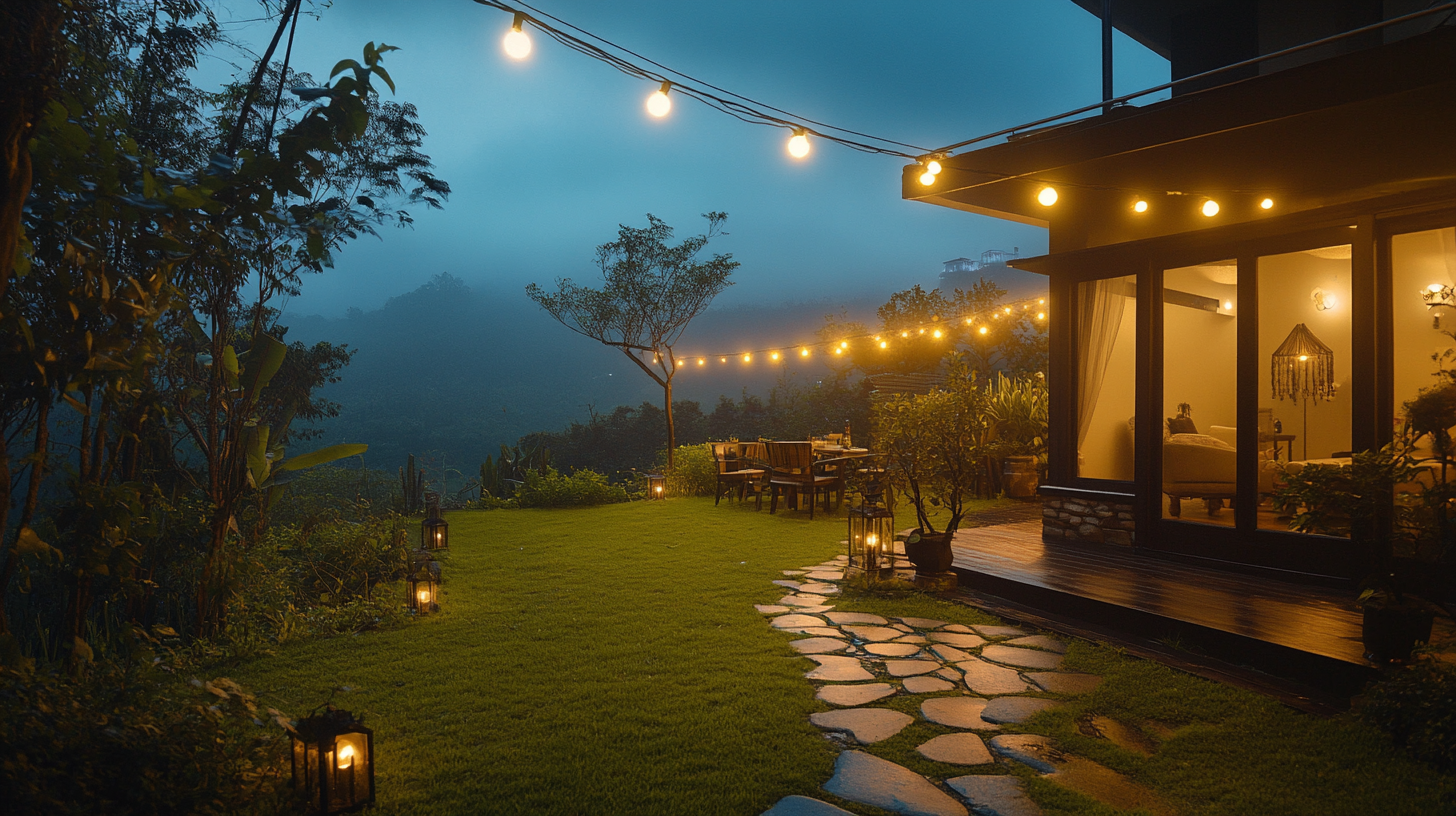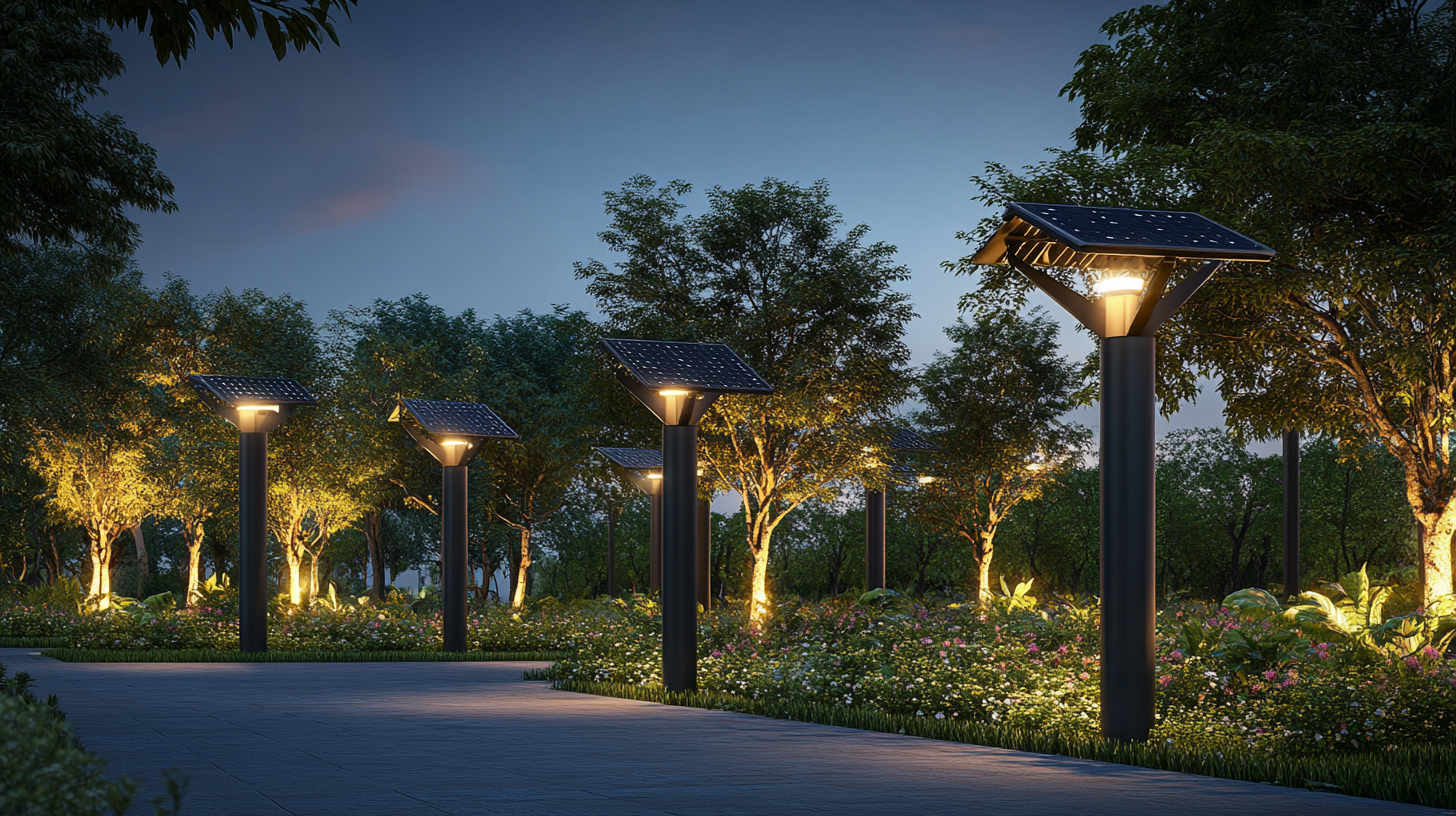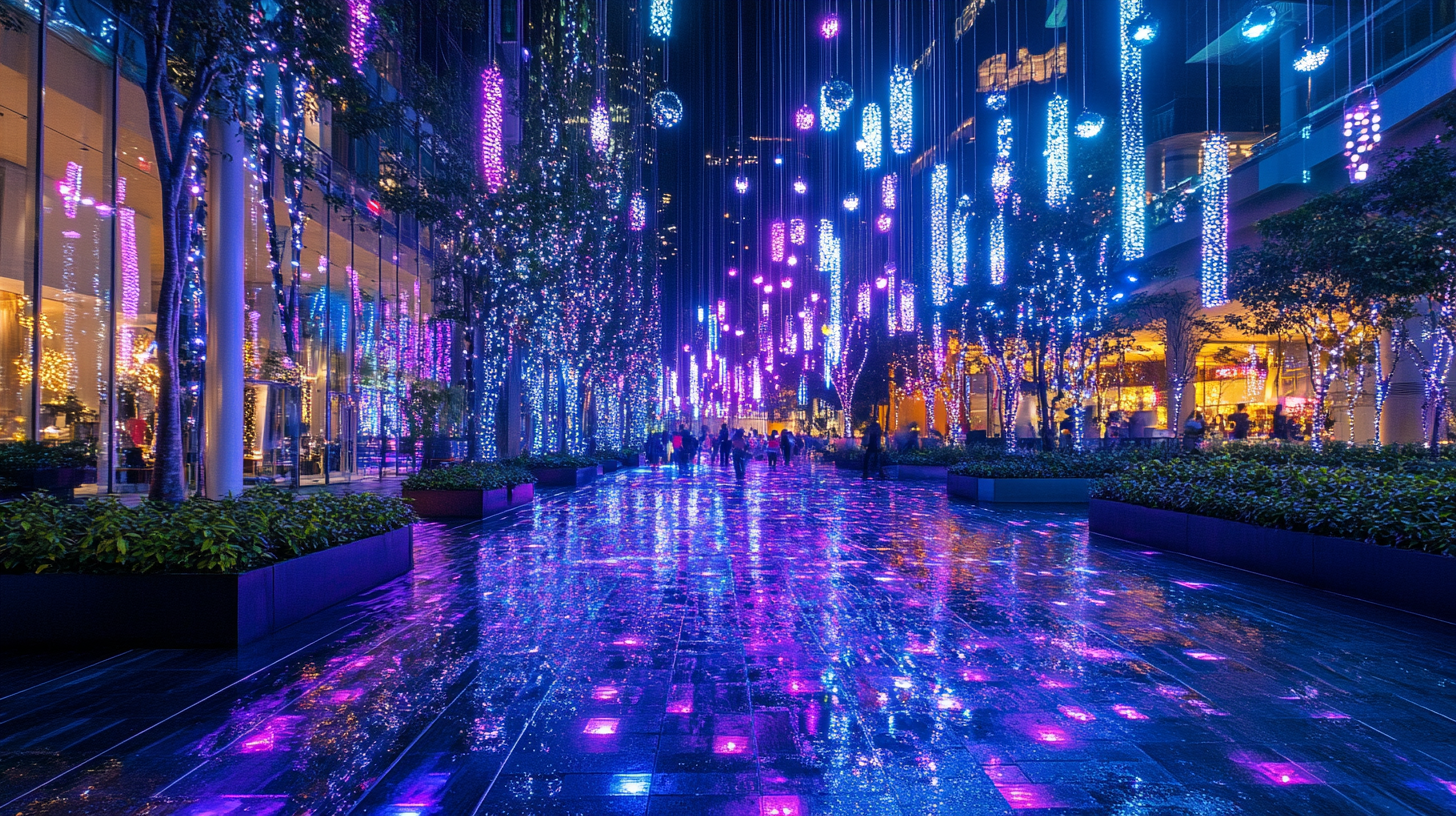2025 Top Trends in Solar Powered Outdoor Lights for Global Buyers
The demand for solar powered outdoor lights has grown hugely in the last few years, and everyone is now interested in sustainable, inexpensive lighting solutions. Due to technological advancement in solar products and a rise in environmentally friendly practices, these new lighting devices are emerging as indispensable in the outdoor segments. As we approach the year 2025, knowledge of the major trends for solar powered outdoor lights will not only help consumers with reasonable purchasing decisions but also propel the cause of adopting energy cleaner technologies worldwide.
This blog will discuss the key trends that are defining the solar powered outdoor lights market. Emerging technologies, design innovations, and consumer demand will be mentioned. From smart lighting systems able to integrate with home automation systems to glam fixtures enhancing garden landscape, we share the expectation from global buyers in the foreseeable future. By being updated on these trends, customers are able to protect their investments in products that are functional and pleasing in aesthetics and that also protect the environment.

Innovative Solar Technologies Transforming Outdoor Lighting Solutions
Emerging solar technologies are creating a revolution in outdoor lighting. They are efficient, ecologically benign, and versatile in their application. One of the hot trends of 2025 is the design of highly advanced photovoltaic cells that convert sunlight into energy at higher efficiency rates. These cells are now not only more powerful but are also lightweight and flexible. Hence, one can integrate them into various outdoor fixtures without the loss of aesthetics, allowing property owners and businesses to integrate stunning solar lights that will beautify their surroundings.
Another exciting trend pertains to solar outdoor lights that incorporate smart technology. The solar lights can now be equipped with IoT capabilities, enabling their remote control via smartphone applications. Users can adjust brightness, set schedules, and even monitor energy usage, which boosts convenience while helping to manage energy consumption and drive sustainability goals. Other systems feature additional technologies like motion sensors, which guarantee that light is turned on only when actually useful, optimizing energy use and adding safety to outdoor surroundings.
Energy storage systems can improve the reliability and efficiency of solar lights. These systems can store excess energy produced during the day to illuminate at night or when the weather is cloudy, ensuring that the lights are properly working. Due to technological improvements, solar-powered outdoor lighting can now last longer, with applications ranging from illuminating pathways to garden features. While the technology continues to develop, the advancement of solar outdoor lighting solutions will pave the way for smarter, greener homes across the globe.

Eco-Friendly Designs: Sustainable Materials in Solar Outdoor Lights
This is a favourite topic for global buyers in 2025, given the increasing number of innovative eco-friendly designs in solar outdoor lighting installations. Manufacturers nowadays are putting a lot of focus on going green by using materials that enhance outdoor ambiance but also conserve the environment. This inclination toward eco-material stimulation has changed the way consumers view and use outdoor lighting, with a pronounced inclination toward quality and sustainability.
Solar lantern and garden-light manufacturing is now a potentially major avenue for recycling. The companies are using recycled plastics, glass, and metals to design products that are durable, trendy, and green. The real winners in the sustainable equation are the consumers who enjoy outdoor light solutions that reflect their values, while reducing landfill waste in process. Moreover, companies are being clearer about their sourcing, allowing buyers to make informed choices to support brands working on eco-friendly practices.
Other natural materials used in designing solar lights are bamboo and hardwood from sustainable sources to endow rustic charm with natural lovers. Besides having an environment-friendly production process, they offer an organic feel that matches various outdoor settings. By promoting these sustainable choices, consumers can light up their outdoor spaces while also materially assisting in the realization of a greener planet. This is what makes eco-sustainable solar lighting a top trend for 2025.

Smart Features: The Rise of IoT in Solar-Powered Illumination
The changing face of solar outdoor lighting is how electricity has brought into it the Internet of Things (IoT), which made energy-efficient lighting very dictated. The smart lighting market is forecasted to rise from USD 12.7 billion in 2020 to USD 22.4 billion in 2025, according to MarketsandMarkets. This growth tremendously has to do with solar systems. Consumers are going more eco-friendly and automated, thus making smart solar lights increasingly more in demand.
Modern solar outdoor lights provide an IoT function where they can be controlled remotely, monitored for energy usage, and set up with customized features. For instance, these lights can adjust their brightness depending on ambient light levels or maybe needs of community since they are tied to some applications via sensors. Reports show that this reduces energy consumption by up to 40% and makes saving not only environmentally friendly but also economically valued by homeowners and municipalities alike.
Additionally, since home automation systems are growing nowadays, these smart solar outdoor lights are set to be highly important and will be installed in smart homes. According to a research study conducted by Grand View Research, the smart home market would attain USD 135.3 billion vie a powerful contribution from outdoor lighting between now and 2025. Solar-o Il lighting sets conditions necessary for better user experience and efficiency in operations and will be crucial for establishing smarter, greener communities worldwide.

Market Trends: Consumer Preferences Shaping Solar Lighting Products
Consumer preferences are changing rapidly in 2025, which has a great influence on the solar-powered range of outdoor products for lighting. Due to growing awareness of sustainability and environmental impact, buyers are more inclined toward energy-efficient solutions that light up outdoor spaces and help the environment. This trend is making manufacturers innovate-and-find new technologies to make their products as much about beauty as function.
Urbanization and smart home demand are also directing design trends for solar lighting. Modern consumers want an integrated system, operable from smartphones or smart home devices. They seek extreme convenience and personalization. Features such as motion sensors, variable brightness, and color-changing LEDs have become baseline expectations. Also, designs that are attractive and integrate well into groovy outdoor decors are currently trending-featuring various beautiful designs, solar lights can now be trendy as well as functional.
The materials, too, are changing, with durability and eco-friendliness being key considerations. There is an increasing preference for recycled or biodegradable products, and consumers assess brands keeping sustainability in mind across their supply chains. Manufacturers that will understand these demands of the buyers and adapt themselves accordingly will be the ones to influence the future of the solar lighting market as the demand for solar-powered outdoor lighting continues to grow.
Design Aesthetics: Blending Functionality with Outdoor Decor in Solar Lights
Solar outdoor lighting is slowly but surely becoming an integral aspect of a number of functional and decorative outdoor settings. Development in a town will seem more well-integrated once solar lighting becomes a part of it because nighttime enhancement can actually be added to the beauty of outdoor space. For example, the recently installed street or solar lights in Ayiranai Village are intended to improve the illumination of dark and dangerous paths to improve safety and accessibility to residents.
Adoption of solar lighting is rightly attributed to aesthetics of design. Today, solar fixtures aren't just practical; they serve the complementing feature to a wide spectrum of outdoor decorating forms. From posh garden lamps to modern pathway luminaires, they have made it possible for individual homeowners and municipalities to decide on the most suitable design for the setting and landscape. The-shift from the increasingly popular scheme of outdoor lighting is demonstrated by manufacturers concentrating more on natural and architectural-friendly designs.
Clearly, a developing solar lighting market is an indication of changing preference from traditional lighting to sustainable solutions. As per the predictions, from 2025-2034, very high sales may be expected for adoption of such lights due to their aesthetics and functionality. Gradually, as the demand for green outdoor fixtures grows, the market is anticipated to respond with innovative design innovations that will meet both the requirements of consumers on both practical and visual aspects.





